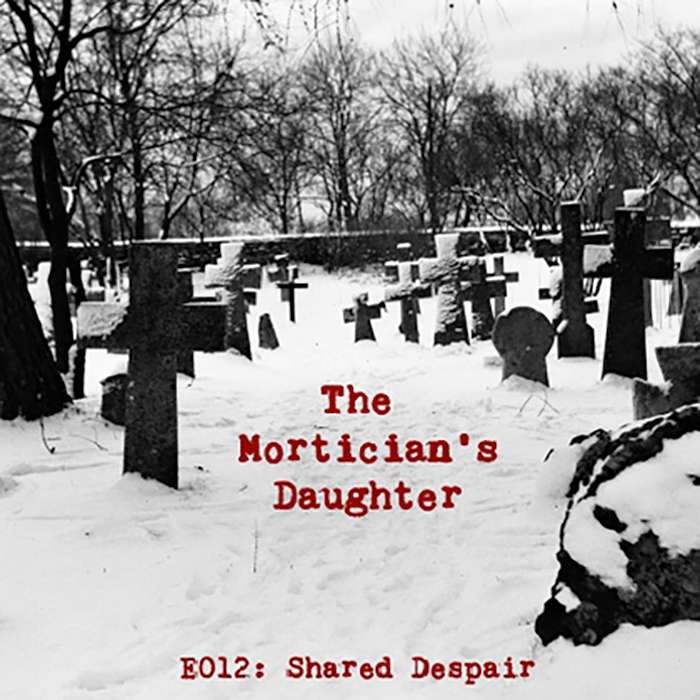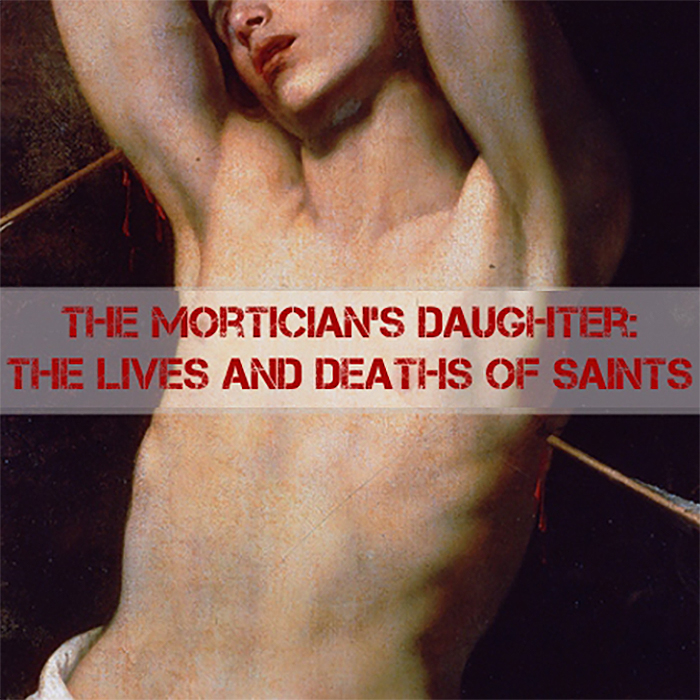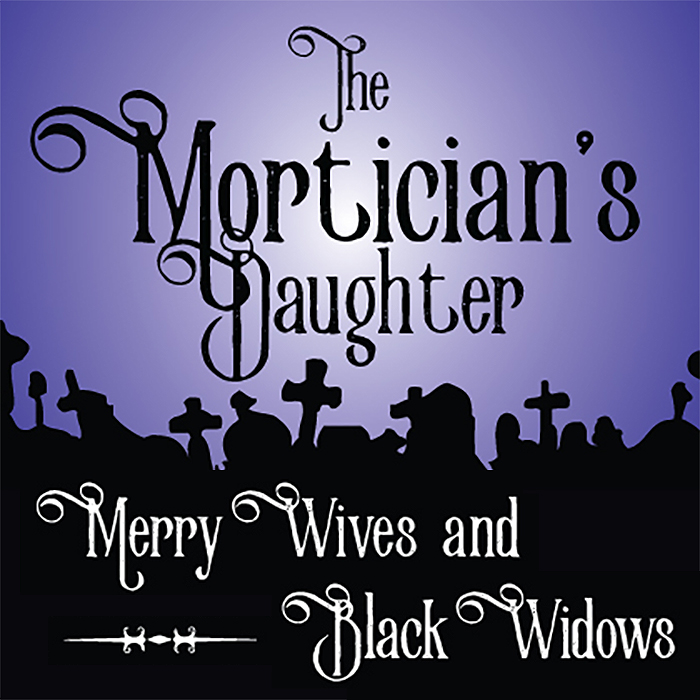Episode Transcript
Good evening to all you witches and warlocks… and everyone else out there. It is October, one of my favorite months of the year, and my favorite holiday is lurking just around the corner. Obviously, I’m talking about Halloween. Samhain. All Hallow’s Eve.
There are so many different festivals and holidays around the end of October that merged together to form what we in the US of A call Halloween and today I’d like us to untangle some of those threads together.
Okay, let’s get this ball a’rolling because we have a lot to touch upon before our time is up. And, this is a good time for a reminder to all you listeners out there. Please keep in mind, these are just monthly installments of morbidity for entertainment purposes. I encourage everyone who listens to always seek out additional information about any of the topics discussed. And, of course, we always appreciate it when folx reach out to us through our social media… or, in person, if we’re cool like that.
Soooo the ancient Celtic, or Gaelic, festival of Samhain is often identified as the starting point for our present-day Halloween. Celts would wear costumes and light bonfires to scare off ghosts and evil spirits. The veil that separates the living from the dead was believed to be at its thinnest this one night of the year. Porous even. So much so that spirits of the dead could simply slip into our world from other realms and wander about on this long late autumn night.
While Samhain, which loosely translates to "summer's end," was taking place in the Gaelic areas of Ireland, Scotland, and the Isle of Man, similar festivals to mark the "first day of winter" took place this same time of year known as Calan Gaeaf or Kalan Gwav or something of the sort depending on what part of the British Isles you happen to be in. [5]
Okay so, after Samhain, the Celts would celebrate the New Year the following morning. Now, the Celtic people occupied the British Isles and parts of northern France roughly two thousand years ago. Some of you might already be familiar with ancient history in those parts, but if you aren’t the Celts were in for a rough go.
Before we were halfway through the First Century, the Roman Empire had conquered the majority of Gaelic lands. Now, as the Roman Empire moved through Europe, and into other regions as well, their holidays became mixed with local practices and celebrations.
Two Roman festivals that occurred around the same time of year as Samhain merged with the end of October holiday. One of those events was known as Feralia, a day for respectfully acknowledging the dead. The second event was a festival to honor Pomona, the Roman goddess of fruit and trees. Halloween is also sometimes connected with Parentalia, or festival of the dead, but that generally took place over nine days in February and not in October.
Interesting sidenote: Pomona’s symbol is an apple which perhaps how apple bobbing first attached itself to Halloween festivities. [1]
And, moving right along, in 313 A.D. the Roman Emperor Constantine issued an edict, known as the Edict of Milan, which accepted the Christian faith. This led to the end of the Great Persecution, as it was known, which started in 303 under Diocletian and his junior co-emperor Galerius.
As some of you might already know, Rome had a different opinion on the matter of Christians that led to a lot of less than fun martyrdoms… You know, feeding christians to lions, crucifying them, beheading them, burning them alive, that sort of thing… tactics that were continued by the Christian Roman Empire just not against Christians for their faith. [2]
And Rome did become Christian. Or, at least, Christianity was named the official religion of the Roman Empire ten years after Constantine issued that edict which was really more of a letter than an actual edict…. But… anyway. [3]
A few hundred years later, on May 13, 609 A.D., Pope Boniface IV dedicated the Pantheon in Rome in honor of all Christian martyrs, and the Catholic feast of All Martyrs Day was established in the Western church. And then Pope Gregory III expanded the festival to include all saints as well as all martyrs a century later, and he moved the observance from May 13 to November 1. [1]
Over the next couple centuries, Christianity spread throughout the expanded Roman Empire, gobbling up local traditions, rites, and religious practices, blending regional deities with christian saints, and merging festivals and celebrations along the way.
In 1000 AD, the Church (big C) named November 2nd All Souls’ Day - a day to honor the dead. This move might have been intended to replace Samhain with a church-sanctioned holiday. All Souls’ Day also has the bonfires as well as the costumes.
Now, what’s the difference between All Saints Day and All Souls Day? Well, All Saints Day on November 1st marks all the Christian saints and martyrs while All Souls Day on the second is for everyone else - for all the souls that perished in this world only to rise again in another - be it heaven or purgatory or what have you.
The double whammy of All Souls’ Day and All Saints Day, was also called All Hallows or All-hallowmas or Allhallowtide. And, the preceding evening was known as All Hallows Eve. Or, as we know it today, Halloween.
These three events together created a triduum - aka, a religious celebration lasting three days. Now the name Allhallowtide was first used in the 15th century and, when the three holidays are taken as one, the triduum, Hallow's Eve becomes the day marked “to remember the wickedness of the world before flood. The second night then celebrates the saved who survived the deluge and the last night celebrates those who would repopulate the Earth.” This concise explanation is offered to us by William Tyler Olcott in his book, Star Lore of All Ages.
Okay, that gives us some of the history of how Samhain became Halloween but I want to skip back a few steps here to talk about the Gaelic holiday which might even have earlier pagan roots, as some scholars suggest. Samhain marked the end of the harvest season and the beginning of the cold, dark, winter months.
As previously discussed, this was a time of year when the divide between this world and the next thinned. Fairies, goblins, and ghosts of the dead were more likely to cross over during this time of year, and in particular, on this one special night. In Celtic traditions, these spirits were not necessarily something to be feared, but rather something to be appeased. Hence, offerings were often made to these otherworldly beings to ensure that the cold winters did not make unreasonable demands by killing off livestock or, you know, people.
For hundreds of years, Halloween or All Hallows Eve kicked off the trifecta of holidays that joined forces with other fall festivities and traditions, squishing them together, handing them back and forth, until we get the strange synchronistic amalgamation that is our contemporary version of Halloween.
Now, very quickly, I want to stick in that not all festivals encountered by Romans or later Christians were consumed in the name of synchronicity. No, no, no. For example, in Mexico, South & Central America, and the southwest US, La dia de los muertos, or Day of the Dead, is very much alive. Celebrated on November 1st and 2nd, Dia de los Muertos is associated with All Saints Day and All Souls Day. Masks, costumes, candy, skulls, candles, connecting with the dead, this event has it all. It is not, however, Halloween and it’s important to differentiate.
Fun Fact: Mexico City hosts a dia de los muertos parade every year. Well, every year since 2016. The event was inspired by the 2015 James Bond Movie - Spectre - which features a daring opening scene wherein the aforementioned Bond, played by Daniel Craig, chases the villain through a crowd of people watching a dia de los muertos parade. The scene was shot in Mexico City and as Lourdes Berho, chief executive of the Mexico Tourism Board, said Spectre created "expectations that we would have something," according to the BBC. [7]
Now to jump back to All Hallow’s Eve, we covered its connections to Samhain, Romans, and early Christians so let’s bring it a bit more present-day. Amongst those in the Western World, Halloween celebrations were largely centered in formerly Celtic lands, especially Ireland, Scotland, the Isle of Man and Wales.
So back when America was still in its colonial days, Halloween wasn’t commonly celebrated. Those early Protestants really didn’t know how to have fun. However, after the influx of immigrants during the Irish Potato Famine, Halloween grew in popularity here in the States. That puts us in the latter half of the 1800s.
This rise in popularity came with a push to give Halloween an American makeover. Folks wanted to make the holiday less about spooky, pagan stuff and more about community. Witchcraft out. Pumpkin Spice in.
Halloween also underwent a bit of a religious transformation here as well. From Roman days to potato famines, All Hallow’s Eve was part of the triduum that included All Saints Day and All Souls Day.
And, by the end of the 20th Century, we find the multi-billion dollar beast we call Halloween. In fact, Halloween is the second biggest consumer holiday, right next to Christmas.
But while the meaning might have shifted for some, many of the traditions surrounding Halloween have withstood the test of time. Dressing up in costumes and trick-or-treating stretches back to the practices of "mumming" and "guising," and honoring the dead seem integrally tied to the holiday. Not really a surprise considering that ancient Celtic belief that the veil between worlds is at its thinnest on the last night of the year, this night-before-winter. Honor your dead relatives and scare off the evil spirits. Makes sense to me.
Trick-or-treating has changed but remains steady, in one form or another, across time. Back in the day, people would exchange treats for prayers for their dead loved ones. Soul Cakes were given to soulers, as they were called, for uncounted generations. Souls Cakes, if you’re wondering, are usually small shortbread cakes sweetened with spices, to be given out on the days of Allhallowtide.
Children and those in poverty would go door-to-door, offering prayers or songs in exchange for soul cakes or other food. But, since the dawn of Halloween, offerings were also made directly to the dead in order to honor or appease.
This might be done by setting an extra plate at the table, lighting candles, or tending to a gravesite. Maybe trading soul cakes for prayers.
More than anything, Halloween gives us an opportunity to explore the things that scare us. Everything from witches to portentous black cats gets the green light for this one night. The holiday creates a fun space where the notions of death and darkness and danger can be explored from a playful perspective.
And, of course, witches and witchcraft have sat central to this holiday from Samhain on. Now, if you ask me, and I’d like to point out that no one actually has, but I’m going to say this anyway, the “spooky witches” of Halloween probably has a lot to do with the Church (big C) demonizing the priestesses or wise women of the Celtic world and that tradition has continued through to today, in one permutation or another.
Bats, black cats, broomsticks, fortune-telling, cauldrons, and spiders - these are all popularly associated with witches - and are all associated with this holiday.
Bobbing for apples and candied apples goes straight back to Rome’s Pomona and while the orange-and-black color scheme harkens back to earlier harvest festivals.
See? Halloween, as it’s known today, presents a long history with countless influences. Untangling them isn’t really an easy task.
Okay, before we wind down this seasonal special, I want to touch upon one of the creepiest aspects of Halloween. Yes, I’m talking about Jack-o-lanterns. I mean, how the hell did that become a thing?
Well, turns out, Jack-o-lanterns used to be even creepier than they are today. True story. Rather than pumpkins, which are native to North America and therefore were not available when the tradition began in Europe, people of the Old World used turnips. I guess sometimes they used potatoes or beets, but turnips were a popular choice. And, let me say, if you haven’t seen a turnip made into a jack-o-lantern, I suggest a quick google search, because that shit is terrifying.
Okay, back to the Irish origin story of Jack-o-lanterns… there was once a farmer named Jack. Some people called him Stingy Jack, but that’s not how I first heard the story so I’m going to stick to just Jack. Annnyway, Jack tricked the devil and, in doing so, managed to get himself locked out of both heaven and hell.
Instead, Jack is left to wander the night for all eternity with nothing but a lump of burning coal to light his path. And Jack placed that piece of coal, gifted by the Devil, into a carved out turnip. Stingy Jack or Just Jack became Jack of the Lantern, or Jack O’Lantern.
Maybe this year as you carve your pumpkin, you can give some thoughts & prayers to ol’Stingy Jack wandering the night for all time.
No matter how you choose to ring in the holiday, I hope you have a fun and safe time. I know there’s a lot we didn’t get to touch upon during this short monthly installment, but maybe we can circle back next Halloween.
Thanks for tuning into The Mortician’s Daughter. You can find us at MorticiansDaughterPod on FB and Insta. And at MorticianDaPod on Twitter. Let us know what you’re thinking or what you want to hear about or what word I kept saying wrong.
Now that I’ve said all that, please make sure you are spending time unplugged. Seriously. The internet and all its applications will melt your brain if you don’t look away once in a while. Look it up.
Until next month, I hope you all find a light in the darkness and a black cat in your path.
Thanks for tuning in.
[1] https://www.history.com/topics/halloween/history-of-halloween
[2] https://theconversation.com/mythbusting-ancient-rome-throwing-christians-to-the-lions-67365
[3] https://www.pbs.org/empires/romans/empire/christians.html
[4] https://en.wikipedia.org/wiki/Allhallowtide
[5] https://en.wikipedia.org/wiki/Calan_Gaeaf
[6] https://en.wikipedia.org/wiki/Day_of_the_Dead
[7] https://www.bbc.com/news/world-latin-america-37813562
[8] https://www.livescience.com/40596-history-of-halloween.html
[9] https://www.livescience.com/16677-halloween-superstitions-traditions.html
[10] https://www.history.com/news/history-of-the-jack-o-lantern-irish-origins


